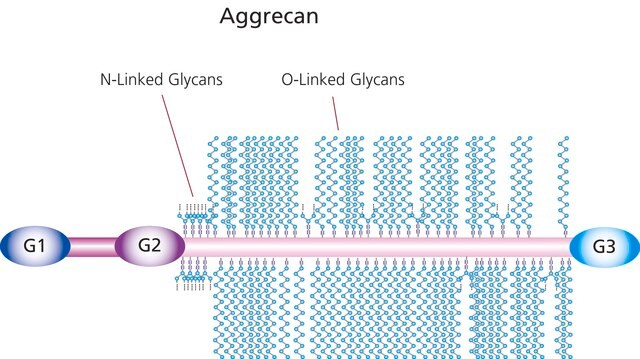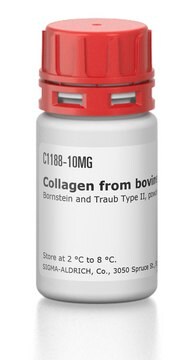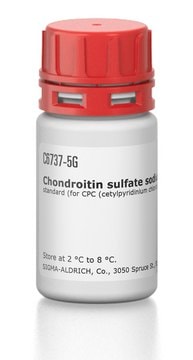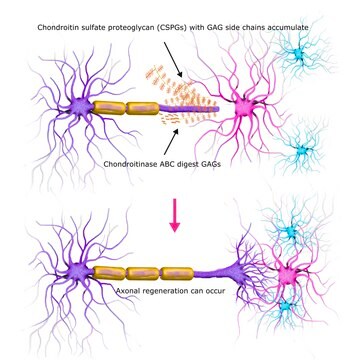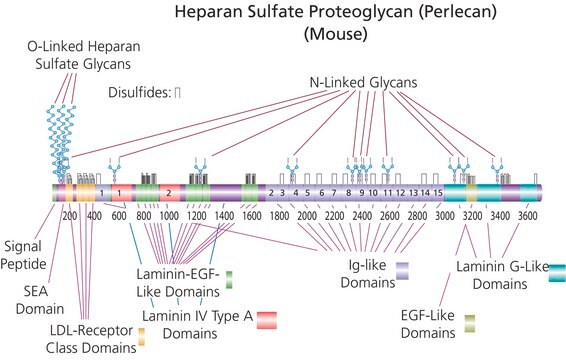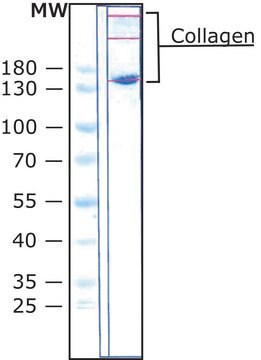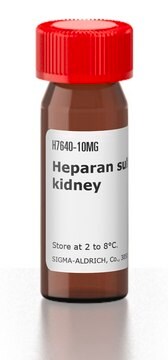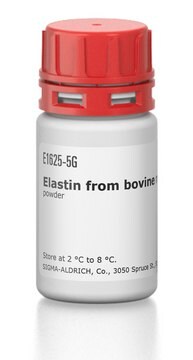B8041
Biglycan from bovine articular cartilage
essentially salt-free, lyophilized powder
About This Item
Productos recomendados
origen biológico
bovine articular cartilage
Nivel de calidad
formulario
essentially salt-free, lyophilized powder
mol peso
200-350 kDa
envase
glass bottle of 0.5 mg
técnicas
cell culture | mammalian: suitable
solubilidad
water: soluble ≥2.00 mg/mL, clear, colorless
Nº de acceso UniProt
Condiciones de envío
dry ice
temp. de almacenamiento
−20°C
Información sobre el gen
cow ... BGN(280733)
Descripción general
Acciones bioquímicas o fisiológicas
Componentes
Precaución
Nota de preparación
Código de clase de almacenamiento
11 - Combustible Solids
Clase de riesgo para el agua (WGK)
WGK 3
Punto de inflamabilidad (°F)
Not applicable
Punto de inflamabilidad (°C)
Not applicable
Equipo de protección personal
Eyeshields, Gloves, type N95 (US)
Certificados de análisis (COA)
Busque Certificados de análisis (COA) introduciendo el número de lote del producto. Los números de lote se encuentran en la etiqueta del producto después de las palabras «Lot» o «Batch»
¿Ya tiene este producto?
Encuentre la documentación para los productos que ha comprado recientemente en la Biblioteca de documentos.
Los clientes también vieron
Artículos
There are five identified glycosaminoglycan chains (see Figure 1): Hyaluronan is not sulfated, but the other glycosaminoglycan chains contain sulfate substituents at various positions of the chain.
Glycosaminoglycans are large linear polysaccharides constructed of repeating disaccharide units.
Nuestro equipo de científicos tiene experiencia en todas las áreas de investigación: Ciencias de la vida, Ciencia de los materiales, Síntesis química, Cromatografía, Analítica y muchas otras.
Póngase en contacto con el Servicio técnico
